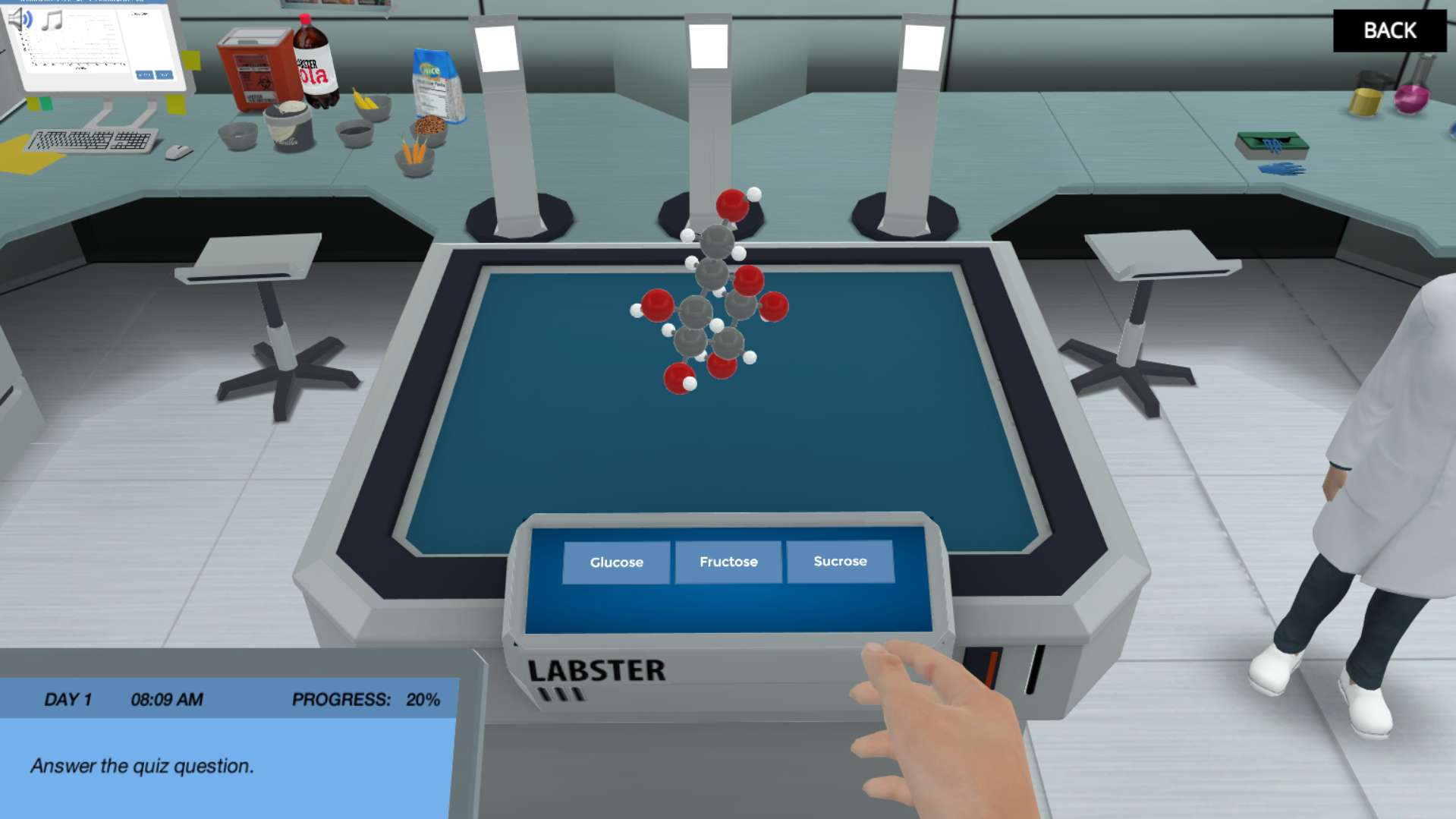Heading 1
Heading 2
Heading 3
Heading 4
Heading 5
Heading 6
Lorem ipsum dolor sit amet, consectetur adipiscing elit, sed do eiusmod tempor incididunt ut labore et dolore magna aliqua. Ut enim ad minim veniam, quis nostrud exercitation ullamco laboris nisi ut aliquip ex ea commodo consequat. Duis aute irure dolor in reprehenderit in voluptate velit esse cillum dolore eu fugiat nulla pariatur.
Block quote
Ordered list
- Item 1
- Item 2
- Item 3
Unordered list
- Item A
- Item B
- Item C
Bold text
Emphasis
Superscript
Subscript
About This Simulation
The Carbohydrates Lab explores how carbohydrates are broken down by the digestive system and taken up into the bloodstream.
Learning Objectives
- Understand the molecular structure of sugars and polysaccharides
- Understand digestion and appreciate the complexity of the human body
- Experiment with different foods and measure their impact on the blood sugar level
About This Simulation
Lab Techniques
- Reading scientific papers
- Analyzing blood sugar measurements
Related Standards
- HS-LS1-3
- HS-LS1-6
- Biology Unit 1.2: Elements of life
- Biology Unit 1.5: Structure and Function of Biological Macromolecules
- Biology Unit 1.3: Introduction to Biological Macromolecules
- Biology Unit 1: Chemistry of Life
- Biology Unit 1.4: Properties of Biological Macromolecules
- 2.3 Carbohydrates and lipids
Learn More About This Simulation
Most people are familiar with carbohydrates, especially when it comes to what we eat. For example, to lose weight, some individuals adhere to “low-carb” diets. Athletes, in contrast, often “carbohydrate-load” before important competitions to ensure that they have enough energy to compete at a high level.
Different types of carbohydrates
Carbohydrates are an essential part of a diet because they provide energy to the body. Grains, fruits, and vegetables are all natural sources of carbohydrates for energy. These foods consist of both soluble and insoluble carbohydrates. The insoluble part is known as fiber, which is mostly cellulose.
Learn how carbohydrates are digested
Your goal in the Carbohydrates lab is to learn how carbohydrates are digested and utilized by the body as an energy source. Use the in-lab molecule visualizer to study the chemical structure of sugars and learn the basics of molecule structures and chemical formulas. You will also perform a real experiment and get a sense of how the amylase breaks down starch. A 3D animation will visualize the molecular process of carbohydrate digestion.
Test the effect on blood glucose levels
You will find that the effect on the blood glucose level is very different, depending on the composition of food. For that reason, you can choose different food items and measure the increase of the blood glucose level of a virtual test subject.
Will you be able to use your carbohydrates knowledge to figure out which foods will cause a spike in the blood glucose levels?
For Science Programs Providing a Learning Advantage
Boost STEM Pass Rates
Boost Learning with Fun
75% of students show high engagement and improved grades with Labster
Discover Simulations That Match Your Syllabus
Easily bolster your learning objectives with relevant, interactive content
Place Students in the Shoes of Real Scientists
Practice a lab procedure or visualize theory through narrative-driven scenarios


FAQs
Find answers to frequently asked questions.
Heading 1
Heading 2
Heading 3
Heading 4
Heading 5
Heading 6
Lorem ipsum dolor sit amet, consectetur adipiscing elit, sed do eiusmod tempor incididunt ut labore et dolore magna aliqua. Ut enim ad minim veniam, quis nostrud exercitation ullamco laboris nisi ut aliquip ex ea commodo consequat. Duis aute irure dolor in reprehenderit in voluptate velit esse cillum dolore eu fugiat nulla pariatur.
Block quote
Ordered list
- Item 1
- Item 2
- Item 3
Unordered list
- Item A
- Item B
- Item C
Bold text
Emphasis
Superscript
Subscript
A Labster virtual lab is an interactive, multimedia assignment that students access right from their computers. Many Labster virtual labs prepare students for success in college by introducing foundational knowledge using multimedia visualizations that make it easier to understand complex concepts. Other Labster virtual labs prepare learners for careers in STEM labs by giving them realistic practice on lab techniques and procedures.
Labster’s virtual lab simulations are created by scientists and designed to maximize engagement and interactivity. Unlike watching a video or reading a textbook, Labster virtual labs are interactive. To make progress, students must think critically and solve a real-world problem. We believe that learning by doing makes STEM stick.
Yes, Labster is compatible with all major LMS (Learning Management Systems) including Blackboard, Canvas, D2L, Moodle, and many others. Students can access Labster like any other assignment. If your institution does not choose an LMS integration, students will log into Labster’s Course Manager once they have an account created. Your institution will decide which is the best access method.
Labster is available for purchase by instructors, faculty, and administrators at education institutions. Purchasing our starter package, Labster Explorer, can be done using a credit card if you are located in the USA, Canada, or Mexico. If you are outside of North America or are choosing a higher plan, please speak with a Labster sales representative. Compare plans.
Labster supports a wide range of STEM courses at the high school, college, and university level across fields in biology, chemistry, physics, and health sciences. You can identify topics for your courses by searching our Content Catalog.















